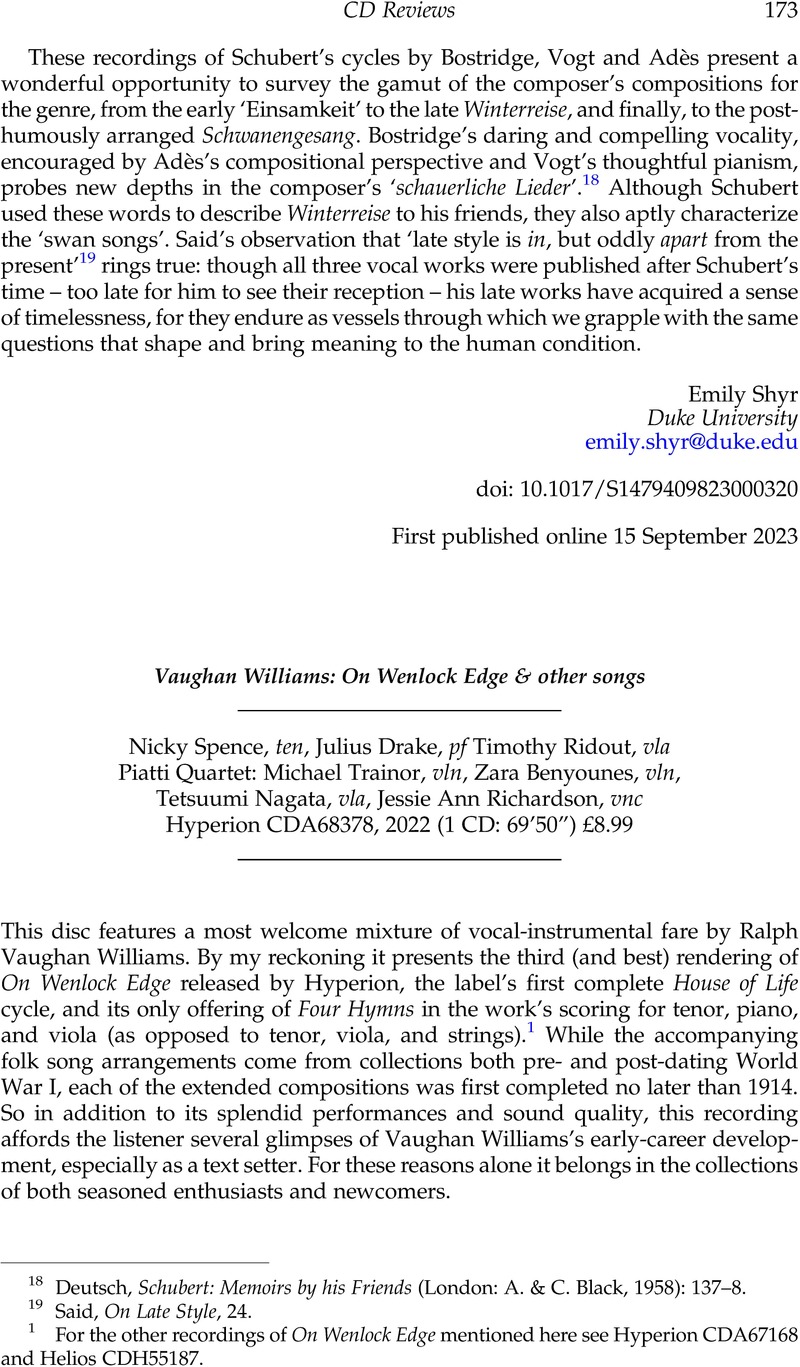No CrossRef data available.
Published online by Cambridge University Press: 06 October 2023

1 For the other recordings of On Wenlock Edge mentioned here see Hyperion CDA67168 and Helios CDH55187.
2 Evans, Edwin, ‘English Song and “On Wenlock Edge”’, The Musical Times 59/904 (1918): 247–9CrossRefGoogle Scholar.
3 Newman, Ernest, ‘Concerning “A Shropshire Lad” and Other Matters’, The Musical Times 59/907 (1918): 393–8CrossRefGoogle Scholar.
4 Evans, ‘English Song and “On Wenlock Edge”’, 248.
5 These performances are available on Decca 4782345 (Disc 5) and EMI 724358515527.
6 Day, James, Vaughan Williams, 3rd ed., The Master Musicians Series (Oxford: Oxford University Press, 1998): 112Google Scholar. See also Dickinson, A.E.F., Vaughan Williams (London: Faber and Faber, 1963): 145–9Google Scholar; and Kennedy, Michael, The Works of Ralph Vaughan Williams, 2nd ed. (Oxford: Oxford University Press, 1980), 78–80Google Scholar. Simon Heffer rather more harshly dismisses the cycle as being from the composer's ‘bottom drawer’; see Heffer, Vaughan Williams (Boston: Northeastern University Press, 2000), 21.
7 Foss, Hubert J., Ralph Vaughan Williams: A Study (Westport: Greenwood Press, 1974): 84Google Scholar.
8 See Kennedy, The Works of Ralph Vaughan Williams, 407–8.
9 I discuss how this song and others were marketed in early recordings of Vaughan Williams's music in a forthcoming book chapter. See Ryan Ross, ‘Early Recordings’, in Vaughan Williams in Context, ed. Julian Onderdonk and Ceri Owen (Cambridge: Cambridge University Press, forthcoming).
10 See Saylor, Eric, Vaughan Williams, The Master Musicians (New York: Oxford University Press, 2022): 95–6CrossRefGoogle Scholar.
11 For another discussion along these lines, see Kennedy, The Works of Ralph Vaughan Williams, 167–8.
12 Vaughan Williams himself claimed that much of the music in the Pastoral Symphony was inspired during his war service. See his letter to Ursula Wood of 4 October 1938 (Letter VWL1378) at The Letters of Ralph Vaughan Williams Database, https://vaughanwilliamsfoundation.org/letter/letter-from-ralph-vaughan-williams-to-ursula-wood-100/ (accessed 13 September 2023).
13 For more on this sale, see: www.billboard.com/pro/universal-music-acquires-classical-label-hyperion-records/ (accessed 17 September 2023).